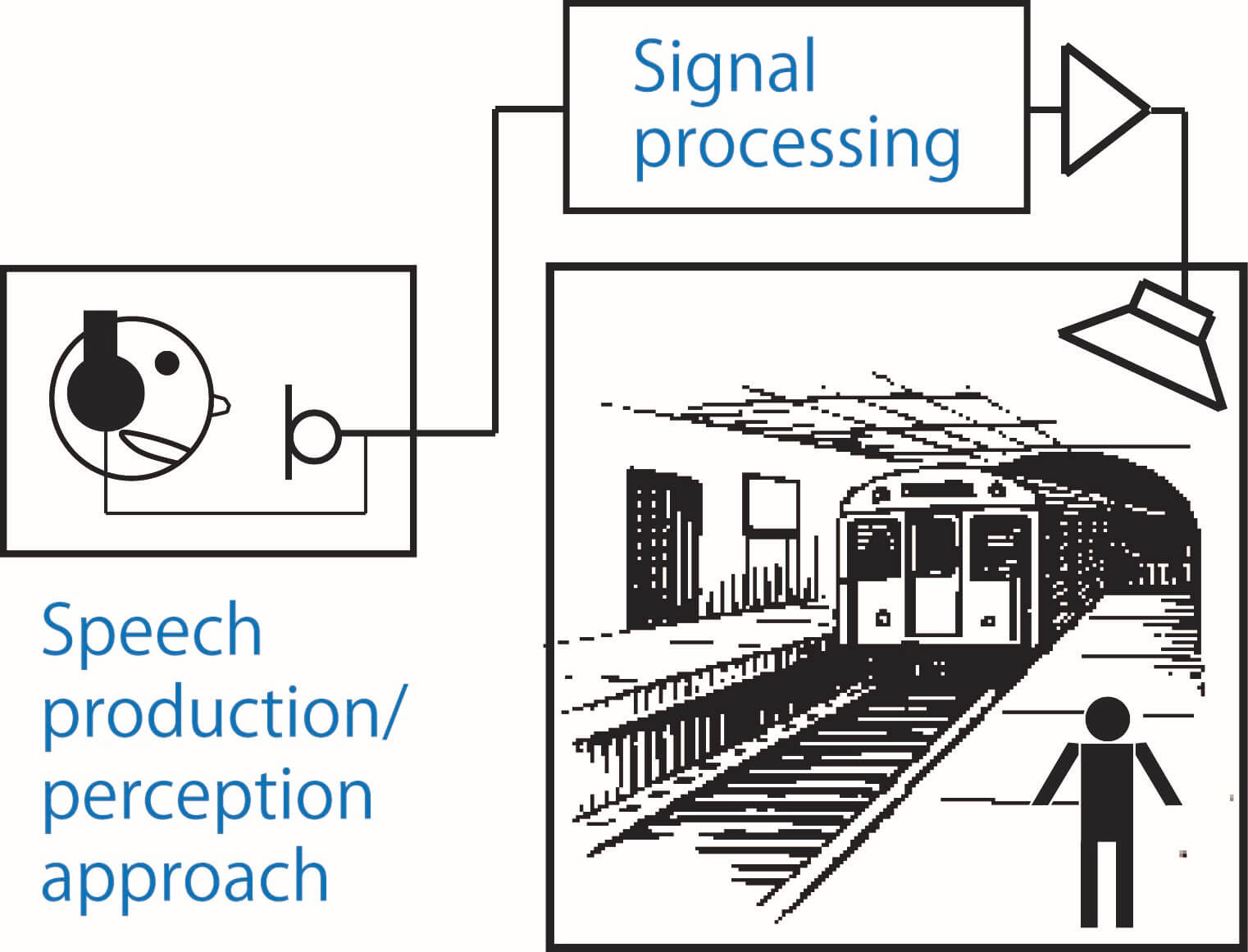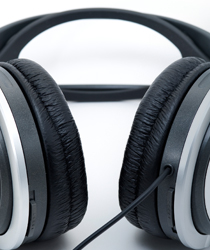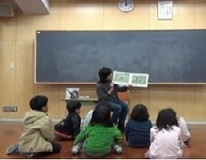Major Research
Creating the technology to provide barrier-free public address announcements during an emergency

Speech intelligibility is generally poor in large indoor public spaces (e.g., train stations or airports) due to environmental noise and reverberation, and this is especially true for older adults, people with hearing-impairments, and nonnative listeners.
We aim to make emergency public address (PA) announcements more intelligible so that users can receive appropriate evacuation information even in indoor public spaces. For this purpose, we have adopted approaches based on signal processing and speech production/perception.
We have demonstrated using listening tests in simulated environments and halls that our methods improve speech intelligibility for young and old individuals, as well as nonnative listeners.
- Signal processing approach
- Applying speech signal processing to reduce the effects of noise and reverberation before broadcasting from loudspeakers
- Speech production/perception approach
- Creation of recording/synthesizing speech environments to produce intelligible speech in noisy and reverberant environments according to human speech modification in challenging communication situations.

Speech intelligibility is generally poor in large indoor public spaces (e.g., train stations or airports) due to environmental noise and reverberation,and this is especially true for older adults, people with hearing-impairments, and nonnative listeners.
Figure 1 shows results of listening test of words in sentences in reverberant environments for young and older adults. Results show that our proposed approach, reverberation-induced speech (R) had significantly higher intelligibility than ordinary speech, speech spoken in quiet (Q) at all reverberation times we tested. Figure 2 shows results of listening test of words in sentences simulating outdoor public address system under aircraft noise for young adults. Results show that our proposed approach, noise and multiple echo-induced speech (R) had significantly higher intelligibility than ordinary speech, speech spoken in quiet (Q).

- Figure 1. Mean intelligibility benefits from proposed approach (R) relative to normal speech (Q) for young and older adults in each reverberation time. Replotted from Hodoshima et al., Proc. ICA, 2010, Hodoshima et al., Proc. Interspeech, 2012

- Figure 2. Mean intelligibility benefits from proposed approach (NE) relative to normal speech (Q) for young adults in aircraft noise and multiple echoes. Plotted from Hodoshima et al., Proc. ICA, 2022.
Prevention of noise-induced hearing loss among young people

As we get older, we generally experience some level of hearing loss. However, the risk of noise-induced hearing loss has increased for younger generations since portable audio players became popular. We create educational content that informs young people about the importance of hearing protection and prevention of noise-induced hearing loss.
We conducted a questionnaire on the hearing situation, sound pressure level measurements of audio players, and pure-tone audiometry in young people ranging from elementary school children to university students. We found that 16% reported experiencing tinnitus and listening difficulties after listening to music and about 10% listened to music with sound pressure levels leading to acoustic trauma.
Crossmodal integration between hearing and vision

We generally use our five senses to process external information, and integrating several sensory modalities enhances or suppresses sensation compared with a single sensory modality.
We study crossmodal integration between hearing and vision including Virtual Reality, such as prevention of virtual reality sickness with 3D Computer Graphics and audio stimuli.
Developing hyperacusis relief software

Hyperacusis is a type of hypersensitivity, and is defined as an increased sensitivity such as the feeling of excessive noise, pain, or discomfort with certain sounds that many people can tolerate. Treatment of hyperacusis includes not only hearing protection such as earmuffs but also cognitive behavioral therapy. However, there are still a lot of unknowns about hyperacusis.
We study the types of sounds that people with hyperacusis find difficult to deal with and aim to develop software that relieves hyperacusis.
Effect of storybook reading on children's comprehension and contentration

Storybook reading has been shown to improve children’s language skills, social abilities, and behavior. Different speaking styles convey different amounts of information and may impact children’s attention span differently. Children are generally more affected by surrounding noise than adults.
We showed that, compared with a pedantic reading manner, a practiced storybook reading manner increased elementary school children’s story comprehension scores. On the other hand, babble noise degraded children’s comprehension and concentration during storybook reading compared with the no noise condition.